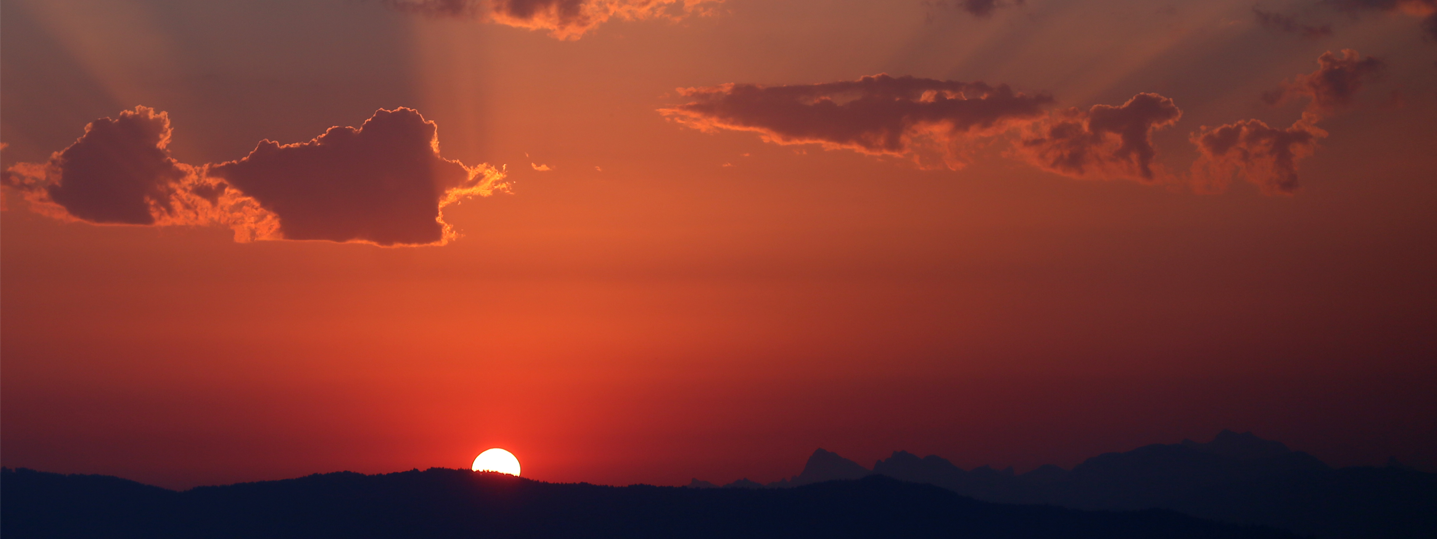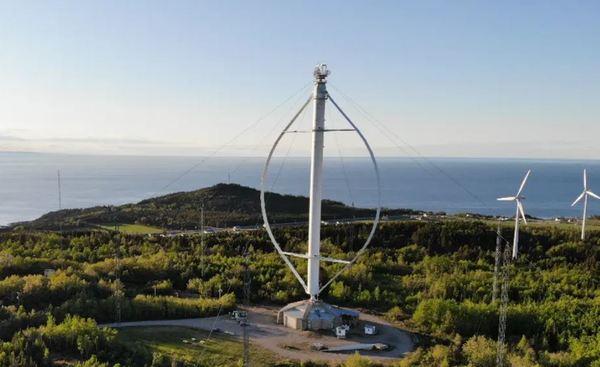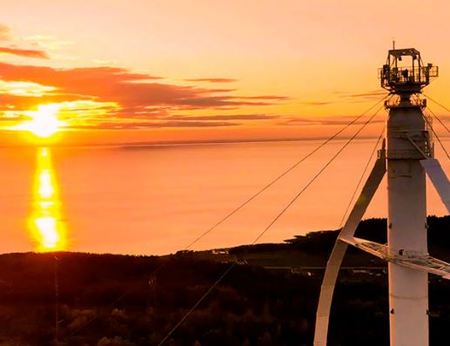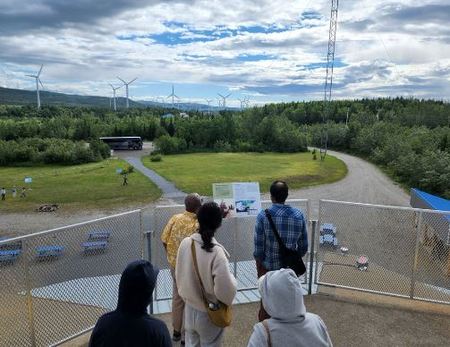In Greek mythology, he is the master and regulator of the winds. In a vast cavern, Aeolus keeps the winds and noisy storms chained and imprisoned, striving to escape. In Cap-Chat, Gaspésie, since 1994, people have been visiting the great Aeolus, one of the world's largest vertical-axis wind turbines.
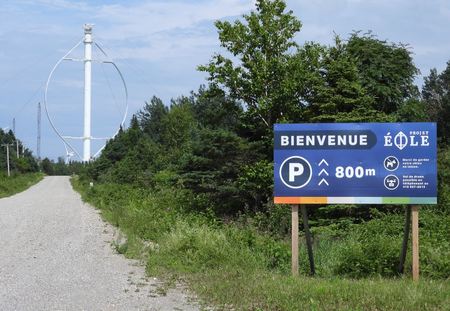
In 2019, two Gaspésie enthusiasts, Benjamin Leduc and Benoit Bénéteau, acquired the vertical-axis wind turbine of Cap-Chat. A new young and dynamic management team is in place, bringing together diverse experiences. The ambitions of these promoters are significant for this project, which was nearly abandoned at one time, but is now undergoing complete revaluation and transformation. "Former wind research laboratory becomes a laboratory on the environment and renewable energy," explain its co-owners.
"I see the site as a unique industrial heritage in the world," Benjamin Leduc declared in an interview with Radio-Canada shortly after the acquisition. The site is intended for tourist purposes and presents the project as a monument dedicated to Quebec's technological heritage and is also an interpretation center on wind energy. The artistic and educational aspects around the theme of wind energy, omnipresent all around, are also being developed.
"Our concept is a bit like a research project of a research project," he explains, to demonstrate the unique and fascinating aspect of their commitment.
Located in the middle of an important wind farm in the region that adorns the plateaus at some distance from route 132 along the Saint Lawrence estuary, Éole is a relic from the beginnings of renewable energy research in Quebec. The 110-meter-high giant was an important step in the development of wind power. Anyone traveling in the area is surprised by the immensity of this large vertical ellipse that overlooks the landscape.
Built in the mid-1980s, Éole was decommissioned since 1993, following an unexpected strong wind that damaged the main bearing of the device, probably also due to the enormous weight of this structure. The power station was not in operation long enough to transition from experimental mode to the status of a modern electric power plant. The project launched by Hydro-Québec pooled resources from the National Research Council Canada (NRCC) and the Quebec Electricity Research Institute (IREQ) to develop these technologies in North America.
It is also important to understand that this experimental wind turbine, entirely made of steel, was erected at a time when the composite materials that characterize the blades of today's wind turbines were not yet available.
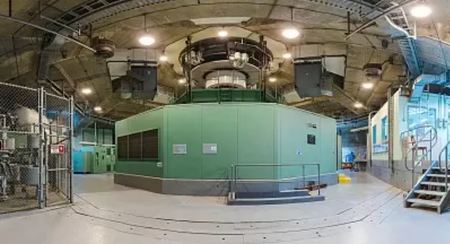
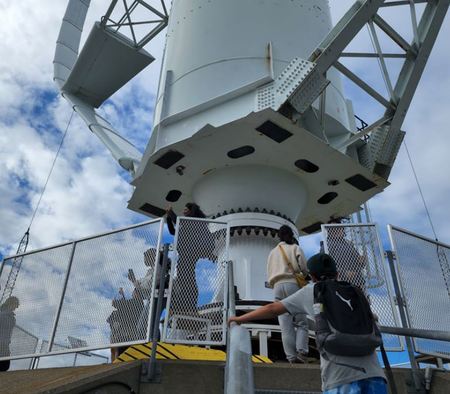
The two partners and co-owners wish to invest more in modernizing the tourist site. They see a lot of potential. In addition to knowledge transmission, they propose discovering the Éole site through various initiatives and playful activities. The site is intended to be a leading attraction for Gaspésie. "A place of wonder and discoveries," adds Benjamin Leduc. Beyond the technological and scientific aspect, the Éole Project also wants to capitalize on the growing interest in self-production of electric energy through small wind turbines. It will offer training and workshops for those interested in getting involved.
The visit to the Éole Project includes:
- Discovering the experimental energy plant built in the 80s.
- Entering the generator and seeing all its vestiges to understand its unique design.
- Explanatory panels on the history of Éole, wind power development, and current industry facts, along with a guide to answer all your questions.
- A panoramic viewpoint with a 360 view to admire the picturesque landscape of the Nordais wind park (first in Quebec) and its surroundings (Cap-Chat, the sea, and the Chic-Chocs mountains), as well as a closer view of the tower.
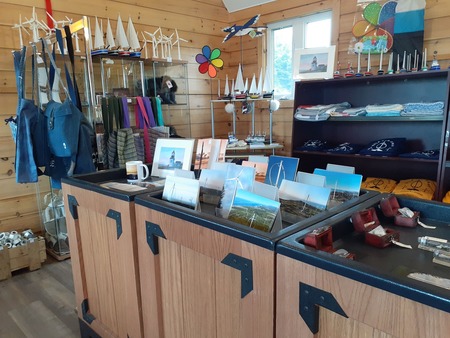
A Foundation to Ensure Its Future
Finally, let us mention the creation of the Fondation Éole, a new development tool for the project. It is an organization focused on the education of renewable energies and sustainable development. It will develop in a way to popularize and share new developments related to these current topics, all within a playful framework and a purpose of integration into community and cooperative initiatives.
Conferences, educational workshops, physical and digital documentation, research and development in energy, and community involvement are the vectors of progress for the foundation. It will provide tools for exporting and disseminating information, content, and vision beyond the physical boundaries of the site. Both will evolve in synergistic development in the coming years. The foundation will synthesize the information present on the site for national dissemination.
An Attraction for the Whole Family
The Éole Project welcomes visitors every year from June 15 to October 1, 7 days a week, from 9 am to 5 pm. A visit that will interest the whole family with its originality and related educational activities. Visitors can also have a picnic, walk through flowered trails, and a permaculture garden at the foot of Éole. The wind-themed souvenir shop at the reception and on the site offers local Gaspesian crafts and unique Éole products.
Éole Project
projeteole.ca
5, chemin du Cap
Cap-Chat (Québec) G0J 1E0
418 967-8812

